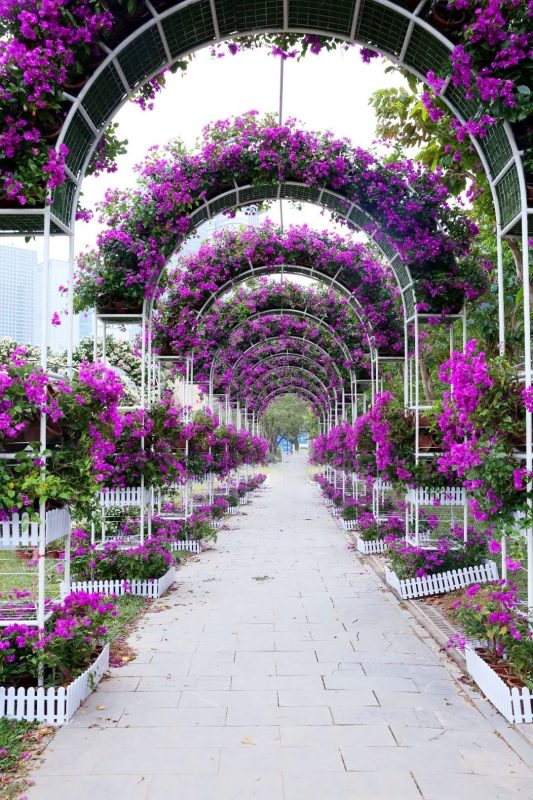
Bougainvillea (scientific name: Bougainvillea spectabilis Willd.), Miraraceae, Bougainvillea is a woody vine-like shrub with curved thorns on the stem and dense hairs. Single leaves alternate, ovate entire, thickly tomentose, apex round and blunt. The flowers are very small, yellow-green, and three are gathered in three red bracts. The outer red bracts are large and beautiful, including bright red, orange yellow, purple red, milky white, etc. They are mistaken for petals because of their shape. leaves, so it is called bougainvillea. The flowering period can be from November to June of the following year. In winter and spring, the colorful bracts appear, giving people a bold and warm feeling, so it is also named He Chunhong.
Bougainvillea is native to Brazil in South America, and it was introduced to Europe for cultivation in the 1830s. Bougainvillea likes a warm, humid and sunny environment, and is not cold-resistant. Except for the southern part of China, it can be cultivated in the open field for the winter, and other regions need it. Potted and greenhouse cultivation. Sandy loam with good drainage is the most suitable soil.
It likes a warm, humid climate and a sunny environment. Not cold-resistant, resistant to early drying, resistant to pruning, strong growth, likes water but avoids stagnant water. Sufficient light is required, and potted plants are maintained in the Yangtze River Basin and areas north of it. The soil requirements are not strict, but it can grow vigorously in fertile, loose, well-drained sandy loam.
Insufficient light of bougainvillea will affect its flowering; the suitable growth temperature is 20-30°C.
